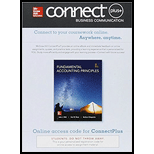
Concept Introduction:
Asset:
An asset is a resource embodying an economic benefit that is owned and controlled by a business entity. The benefits derived from an asset are generally spread over the useful life of the asset. Assets can be tangible or intangible. In accounting, an asset is a real account and always shows debit balance.
Liability:
Liability is the obligation arising out of carrying business transactions that needs to be settled within a specified period of time. It is the sacrifice of economic benefits in future as the result of an obligation. Liabilities are classified as long term and short term. Liabilities represent real account and always show credit balance.
Equity:
Equity represents the ownership value of the business. In other words, the difference between assets and liabilities of a business is called equity. It is the net asset of an entity.
Revenue:
Revenue is the income earned by a business from its normal course of business by selling its products or services. It is also called sales or turnover. In accounting revenue, it is a nominal account and represents the credit balance.
Expense:
Expense is the money spent in a business effort to generate revenue. It is the outflow of resources for an item, service or a cost. Expense is a nominal account and always shows the debit balance.
To determine: The assets, liabilities, equity, revenue and expense accounts from the list of items
Want to see the full answer?
Check out a sample textbook solution
Chapter 2 Solutions
Connect 2-Semester Access Card for Fundamental Accounting Principles
- Can you solve this general accounting problem using accurate calculation methods?arrow_forwardCan you explain this financial accounting question using accurate calculation methods?arrow_forwardCan you provide the accurate answer to this financial accounting question using correct methods?arrow_forward
- Please provide the answer to this general accounting question using the right approach.arrow_forwardI am looking for help with this financial accounting question using proper accounting standards.arrow_forwardI need assistance with this financial accounting problem using appropriate calculation techniques.arrow_forward
- Please provide the correct answer to this financial accounting problem using accurate calculations.arrow_forwardCan you provide the accurate answer to this financial accounting question using correct methods?arrow_forwardCan you solve this financial accounting problem with appropriate steps and explanations?arrow_forward

 AccountingAccountingISBN:9781337272094Author:WARREN, Carl S., Reeve, James M., Duchac, Jonathan E.Publisher:Cengage Learning,
AccountingAccountingISBN:9781337272094Author:WARREN, Carl S., Reeve, James M., Duchac, Jonathan E.Publisher:Cengage Learning, Accounting Information SystemsAccountingISBN:9781337619202Author:Hall, James A.Publisher:Cengage Learning,
Accounting Information SystemsAccountingISBN:9781337619202Author:Hall, James A.Publisher:Cengage Learning, Horngren's Cost Accounting: A Managerial Emphasis...AccountingISBN:9780134475585Author:Srikant M. Datar, Madhav V. RajanPublisher:PEARSON
Horngren's Cost Accounting: A Managerial Emphasis...AccountingISBN:9780134475585Author:Srikant M. Datar, Madhav V. RajanPublisher:PEARSON Intermediate AccountingAccountingISBN:9781259722660Author:J. David Spiceland, Mark W. Nelson, Wayne M ThomasPublisher:McGraw-Hill Education
Intermediate AccountingAccountingISBN:9781259722660Author:J. David Spiceland, Mark W. Nelson, Wayne M ThomasPublisher:McGraw-Hill Education Financial and Managerial AccountingAccountingISBN:9781259726705Author:John J Wild, Ken W. Shaw, Barbara Chiappetta Fundamental Accounting PrinciplesPublisher:McGraw-Hill Education
Financial and Managerial AccountingAccountingISBN:9781259726705Author:John J Wild, Ken W. Shaw, Barbara Chiappetta Fundamental Accounting PrinciplesPublisher:McGraw-Hill Education





